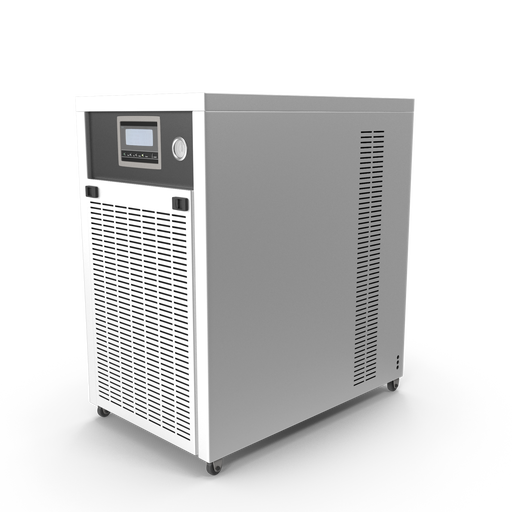By removing heat from the system and transferring it to another location, industrial chillers are refrigeration systems used to lower the temperature of equipment, industrial spaces, and process fluids. Temperature management is crucial in many industrial processes, including injection moulding, metal plating, oilfield production, and food processing.
If you want to learn more about industrial chillers, continue reading this article, for we have discussed a brief guide.
What Is The Reason To Use a Chiller?
Heat is the most frequent result of industrial processes, equipment, and motor inefficiencies. If this heat is not eliminated, it could eventually build up and cause equipment shutdowns, lower production rates, and possibly even premature equipment failure. Industrial process systems must be built with cooling in mind to avoid these problems.
A chiller circulates the cooling water rather than using a wasteful single-pass-through device. Reusing water lowers the cost of water usage, which can be costly and harmful to the environment.
How Does an Industrial Chiller Work?
The operation of a chiller is based on vapour compression or vapour absorption. A process water system’s cold side receives chilled water from chillers at a temperature of roughly ten °C (50 °F ).
Before returning to the return side of the process water system, the coolant is circulated through the process, eliminating heat from one section of a facility (such as machinery, process equipment, etc.).
A chiller is a mechanical cooling system that uses vapour compression and is connected to the process water system through an evaporator. A chiller’s evaporator, compressor, condenser, and expansion device circulate refrigerant.
Every component of the chiller stated above goes through a thermodynamic process. The evaporator is a heat exchanger, transferring heat from the refrigerant to the process coolant flow. The refrigerant evaporates, turning from a low-pressure liquid to a vapour due to heat transfer, and the temperature of the process coolant drops.
After that, the refrigerant is delivered to a compressor with several uses. To keep the evaporator pressure low enough to absorb heat properly, it first removes refrigerant from the evaporator.
Maintaining a high temperature for the heat to be released when it reaches the condenser also increases the pressure in the evaporating refrigerant. At the condenser, the refrigerant transforms back into a liquid state. The refrigerant releases latent heat when it condenses, which a cooling medium removes.
What are a Chiller’s Basic Components?
1. Compressor
Any chiller system’s driving component is the compressor. The pressure gradient is created to circulate the refrigerant throughout the chiller unit to achieve process cooling. Centrifugal, screw, and reciprocating compressors are the three most popular types of condensers.
2. Evaporators
An evaporator between the expansion valve and condenser converts heat into circulating refrigerant. This is subsequently sent to a cooling tower or the air, depending on how the chiller is configured.
3. Thermal Growth Valves
Thermal expansion valves between the compressor and the evaporator expand the refrigerant as it passes through them. This lowers pressure and improves the evaporator’s ability to remove heat.
4. Energy Source
Each chiller has a power unit that controls the system’s flow of electrical energy. Circuit breakers, power monitoring panels, and starters are standard parts of power units.
5. Regulatory Measures
control panels are used to manage the entire cooling process. Operators can optimise thermal control by changing system settings thanks to integrated sensors, alarms, and display screens.
6. Water Boxes
These components can be mounted on a chiller’s water-cooled condenser or evaporator. They serve as effective water flow channels.
Conclusion
Industrial chillers are an essential part of many manufacturing and processing operations. They help keep products and materials at the correct temperature, improving quality and efficiency.
If you’re looking for chiller rentals in London, London Climate Hire is the best for you! We have amassed a wealth of knowledge in the industry and are confident that we will be able to offer you a cost-effective, rapid-response installation and get you back to business as usual. Contact us now!

